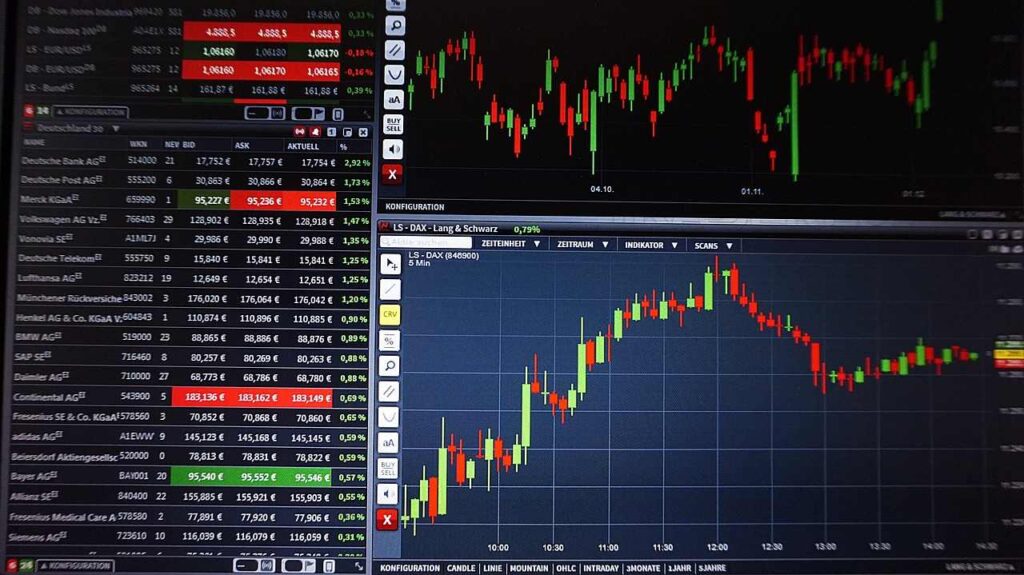
15 April 2022
Unlike in the past, when going public was only possible through an IPO (initial public offering), more methods such as direct listing have emerged recently. Companies can leverage direct listings and IPOs to list shares on a public exchange avenue and raise capital. Read on for more details on direct listing vs IPO.
The initial public offering allows companies to create, underwrite, and sell new shares to the public. In direct listing or direct public offering (DPO), only existing dominant shares are sold. It doesn’t involve underwriters or the creation of new shares. Apart from IPOs and direct listing, firms can also go public via the Special purpose acquisition companies (SPACs) approach.
Firms that choose direct listing are not in search of capital. Their core goal is to enjoy the perks of a public company, like more liquidity for their shareholders. Such firms would meet specific conditions. Since no underwriters sell stocks, the firm should be inviting enough for the capital market.
The direct listing approach is ideal for companies with a user-friendly business model, customer-facing with a solid brand identity, and does not require extra capital. For organizations with sufficient capital raise and seeking to be listed, the direct listing can be ideal because it is anti-dilution and eliminates the need to issue new shares. Some of the companies that have successfully gone public via direct listings include Slack and Spotify.
An initial public offering could be the first time the public can purchase shares in an organization. However, it is worth noting that IPOs are often meant to ensure that early investors in the firm obtain cash from their investments.
An IPO marks the finalization of one phase and the start of another in a firm’s existence. In this case, some original investors could be interested in selling their stakes in a startup business. Investors in well-established private companies that choose to go public may want to dispose of all or a percentage of their shares.
According to Matt Chancey, a financial advisor based in Tampa, Florida, “The reality is that there’s a friends’ and a family around, and there are some angel investors who came in first. There’s a lot of private money—like Shark Tank-type money—that goes into a company before ultimately those companies go public.” An issuer can choose an IPO for various other reasons, like promoting an organization’s public profile or raising capital.

Usually, direct listings neither generate new shares nor raise money for the organization. It involves insiders disposing of shares of the company to new investors. Worth mentioning is that the Securities and Exchange Commission in the US recently revealed that it would authorize organizations to raise money via direct listings.
That announcement means that companies can skip the traditional initial public offering process. Companies using direct listing don’t need to hire investment banks to approve the transaction during an IPO.
Besides making significant savings on fees, firms using the direct listing process usually evade the traditional IPO limitations such as lockup periods while barring insiders from disposing of their shares for a specific period of time.
Through an IPO, companies can obtain new capital from public investors. Private investors can leverage the shift from a private company to a public entity to earn from their investment. The initial public offering network involves broker-dealers, investment banks, insurance companies, and mutual funds.
Before the IPO, an organization and its underwriter participate in a roadshow. The chief principals perform to institutional investors to convince them to buy the soon-to-go public stock.
The core difference between an IPO and a direct listing is that one circulates new stock shares while the other dispose of existing stocks. In a direct listing arrangement, investors and employees dispose of their current stocks to the general public. An organization disposes of part of the firm in an IPO by delivering new stocks.

There are no underwriters in a direct listing. Usually, underwriters collaborate with investment banks to sell ETFs and stocks of companies going public. Leveraging underwriters and disposing of shares at discounted prices increases the cost and time of firms issuing new shares. The idea of investment banks purchasing stocks and selling them is not common practice. Instead, they leverage their network to promote the stocks and increase sales.
The direct listing doesn’t feature the restriction period available in IPOs. Companies using traditional IPOs often have lockup periods where existing shareholders are restricted from disposing of their shares in the public market. That period prevents a massive supply in the market that could lower the share price.
Both IPOs and direct listing come with pros and cons.
The ability to purchase stocks at the IPO price gives investors an attractive deal. Some IPO prices increase after they become available for the public market.
Besides offering price support, underwriters perform price analysis in advance, providing more assurance on the quality of initial public offerings and their initial prices.
Following the extensive due diligence involved in IPOs, investors have sufficient information to convince them that the investment is worth it.
The IPO process can consume lots of time, causing anxiety among investors.
Initial public offerings can be costly for firms, draining a considerable amount of proceedings from the IPO to broker-dealers and underwriters.
Some IPOs soar while others don’t. There is a risk of losing money once the stock goes public.
IPOs are usually popular, meaning that investors struggle to acquire them at the IPO price.
A direct listing is a fast process for companies and their private investors.
Direct listing eliminates the Wall Street underwriting process, saving the company money.
Increased volatility. Direct listing prices can be overly volatile at the begining than IPO shares because they have not encountered price discovery.
Taking a company public through an Initial Public Offering (IPO) presents a range of challenges and considerations. Firstly, the extensive regulatory and compliance requirements demand meticulous financial reporting and transparency, often necessitating significant time and resources. Moreover, the IPO process requires careful navigation of market conditions, as the timing of the offering can greatly impact valuation and investor appetite.
Balancing the needs of existing stakeholders with those of potential shareholders is another intricate task, as differing expectations might arise. The transition to a public company also involves a shift in culture, with increased scrutiny from analysts, investors, and the media.
Maintaining sustainable growth post-IPO is crucial to justify investor confidence and manage market expectations. Overall, while an IPO can provide access to capital and liquidity, these challenges underscore the importance of strategic planning and a clear understanding of the complex landscape in which companies go public.
In an IPO, underwriters support a firm, allowing it to remain afloat in the trading industry. They regulate a trading range and price. However, direct listings are often riskier for investors during the initial trading days because they are vulnerable to fluctuation. Price shifts occur during the direct listing’s first day of trading because the public is unaware of the number of shares available.
Deciding between a direct list and an IPO is an important preference for a business enterprise seeking to pass the public. Several factors need to be considered to determine which option is most suitable for a specific organization’s desires and situations. Here are some key considerations to help determine when to not forget a direct list or an IPO:
Direct Listing: Companies with a robust monetary function, widespread existing capital, and no on-the-spot want for additional funds would possibly opt for a right-away listing. It permits them to go public without diluting current shareholders or raising new capital.
IPO: Companies seeking sizable capital infusion to fuel increase, enlargement, or fund acquisitions ought to recollect an IPO. It presents get right of entry to a much broader investor base and the opportunity to raise a huge price range.

Direct Listing: If a company has a sturdy and set up a call from investors and massive interest from public markets, a right-away list can be a viable option to capitalize on that demand without the want for underwriters.
IPO: Companies that need to create hype and attract a broader spectrum of buyers, such as institutional investors, may discover an IPO greater appropriate. Underwriters can help construct investor hobbies and facilitate the distribution of shares.
Direct Listing: Founders and early buyers who want to hold more manage over the listing method and keep away from lock-up periods would possibly pick a direct listing because it permits insiders to promote their stocks straight away.
IPO: Founders seeking to coin out a vast element in their shares over time might also choose an IPO, wherein lock-up periods limit insider selling within the preliminary months, doubtlessly leading to a more managed and orderly market.
Direct Listing: Companies that cost transparency and prefer a marketplace-pushed approach to deciding the proportion charge might also lean in the direction of a right-away list, in which the marketplace sets the preliminary share rate based totally on delivery and call.
IPO: If an enterprise goal is a more controlled pricing procedure and steerage from underwriters, an IPO offers an opportunity to set an initial imparting rate based on market situations and agency valuation.
Direct Listing: Generally, direct listings have a shorter and greater streamlined system than IPOs, ensuing in decreased costs. Companies searching out a quicker path to the public markets can also find this feature attractive.
IPO: IPOs contain huge instruction, regulatory compliance, and related costs because of underwriting fees and other costs. Companies willing to invest the time and sources for a probably large capital raise and increased publicity may decide on an IPO.
Direct Listing: Companies assured of their marketplace positioning and the stableness of their enterprise may opt for a direct listing while market conditions are favorable.
IPO: Companies that agree with market situations are conducive to a success IPOs, with a tremendous monetary outlook and sturdy investor urge for food, might choose an IPO to capitalize in the marketplace sentiment.
Ultimately, the decision between a right-away list and an IPO need to be based on a radical assessment of the company’s economic wishes, targets, and marketplace situations. Consulting with monetary advisors, legal professionals, and skilled experts within the capital markets can be precious in making the best choice for the company’s future.
One of the best examples of a firm that went public through direct listing would be Spotify. It started trading on the New York Stock Exchange as SPOT. The first listing reference price per share was $132. The introductory price would spike to $165.90, over 25% more than the NYSE stock price reference. That propelled the firm to a more than $29.5 billion stock market valuation.
Nasdaq has also been directly listed since 2006. Plans to directly list Airbnb, a famous unicorn, changed when the company opted for a traditional IPO instead. Other firms that have successfully gone public via direct listing include Coinbase and Roblox.
A direct listing is an efficient and fast strategy that an organization can use to go public. While underwriters are not necessary for a direct listing, that could trigger more stock volatility once it starts trading due to the price commitment available in the IPO process.
Image Credit: